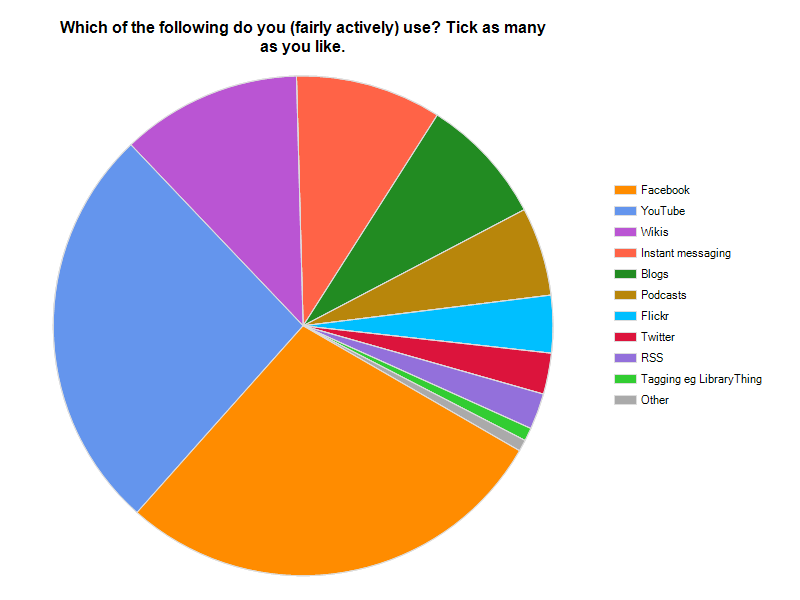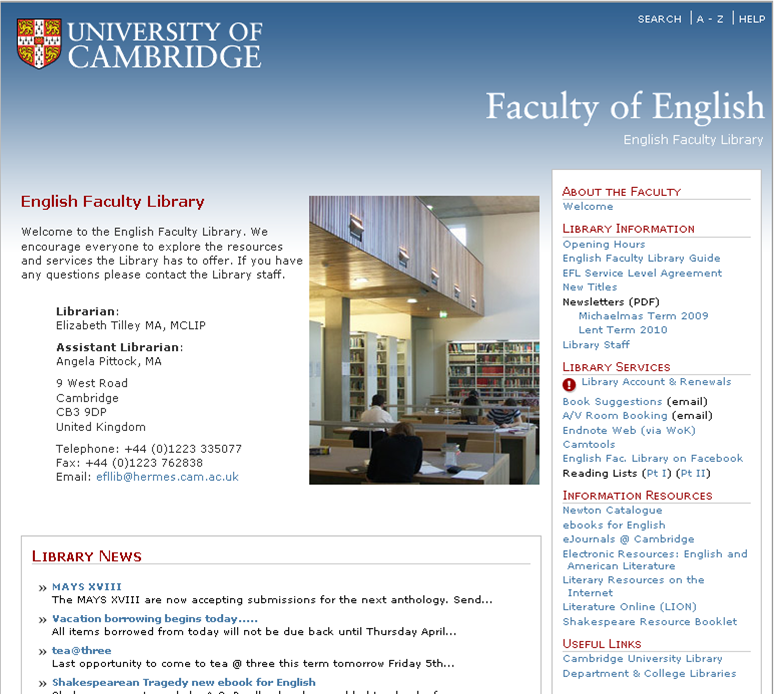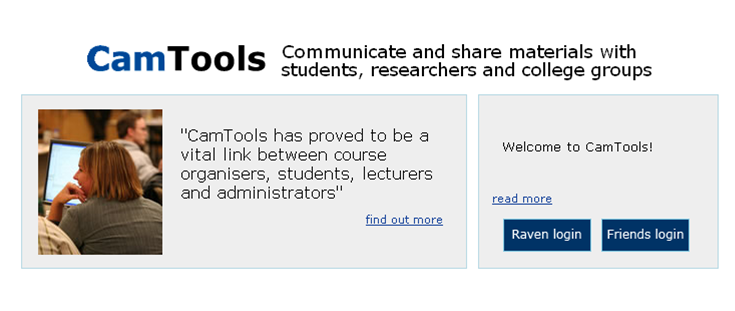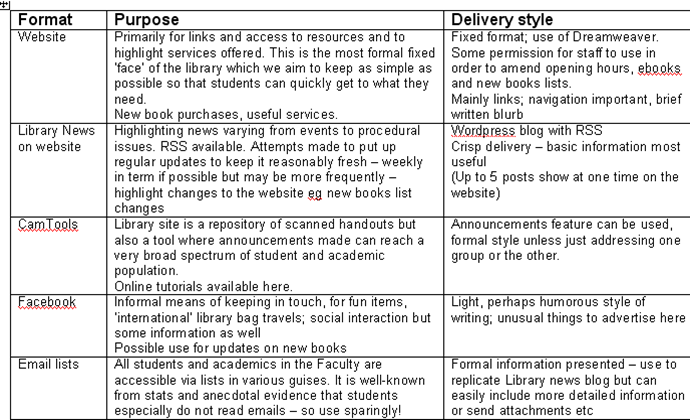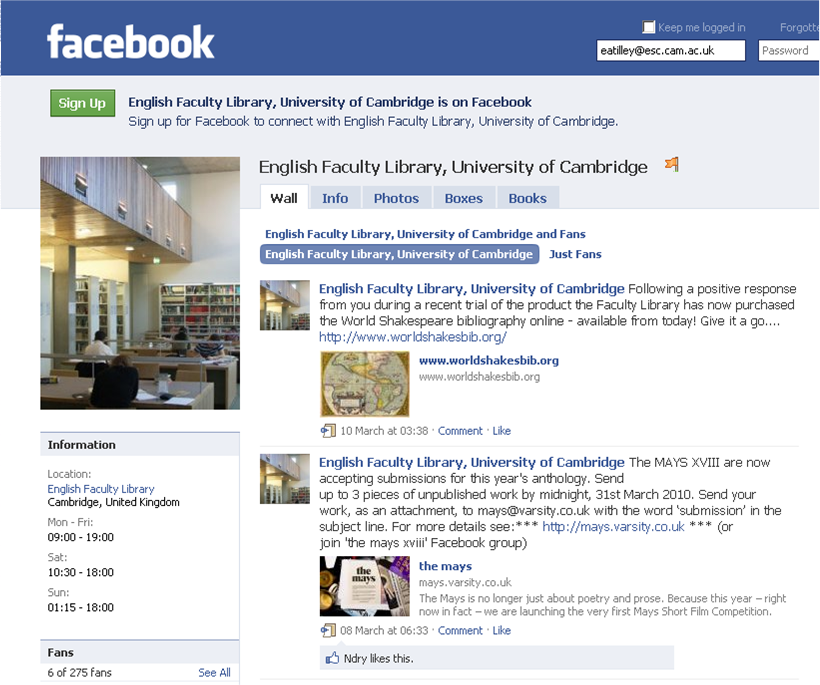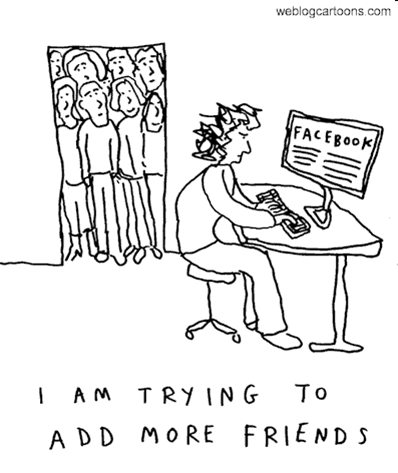To ‘fb’….or not to ‘fb’
Posted by guestblogger on 16th April 2010
About This Guest Post
Libby Taylor is the English Faculty Librarian at the University of Cambridge and gave a great presentation at our last Web 2.0 workshop in Cambridge.
Libby initially trained as a teacher before moving into librarianship and as a result tends to focus on training, communication in its broadest sense, and the delivery of effective and personalized services. She is passionate about addressing the needs of users and tailoring the service she works for appropriately. Her post is about the English Faculty’s use of Facebook and the dilemmas it posed.
To ‘fb’….or not to ‘fb’
Running a subject-specific library affords the opportunity to tailor services and resources towards a very specific clientele. The 600+ undergraduates and 200+ postgraduates, plus Faculty, who regularly use the English Library at Cambridge tend to have similar research and working habits. Whilst always sociable, the mode of study is solitary for the most part, and involves a mix of online and print, where print is the staple diet and online is useful largely for reference-style study.
A very recent survey poll (March 2010) of undergrads and grads (approximate 40% response rate) in terms of Web 2.0 tools shows widespread knowledge of the most popular tools. However, in terms of active use, there are relatively few tools regularly being used with Facebook and YouTube most commonly used. It was disappointing to see that less than 5% of those responding to the survey used RSS feeds (as our library news has an RSS feed it’s clear we need to educate users more about using it rather than just assuming that they will).
Effective communication relies on good interaction between people, where information is shared, and where collaboration leads to re-packaging and further dissemination. The key issue for information providers is to effectively communicate with our users. Web 2.0 tools are clearly focused on interaction, sharing and collaboration which should make them ideal for effective communication. However it is crucial to know your users and work within their context. At the English Faculty we can make use of other means of communication which in many ways better suit the people there (at least for the moment). Non-text based communication in the form of flowers, or pictures/photographs on the plasma screen situated above the issue desk often result in effective communication. They are useful precisely because the users are physically there in the Library with resulting face-to-face contact far more likely than in a science subject, for example. Effectiveness may also depend on making the right choice for disseminating/sharing any particular type of information and choosing whether we need to engage users interactively or not; choosing perhaps between using the VLE, face-to-face, or a blog or Facebook.
Using Facebook at the Faculty Library stemmed from a summer of playing with Web 2.0 tools in 2008. However we were also considering changes in the website and also how to set up and make use of the Cambridge VLE facility, CamTools. To add to this, we had also spent some time in the previous few months considering how to market and promote the library’s resources and services better.
By the end of the summer there were simply too many ideas, too many formats, and no real focus on what we were using the any of the tools at our disposal for and what purpose they would fulfill that would make sufficient difference to warrant the time invested in them. It took very little effort to set up accounts e.g. to Facebook, for a WordPress blog, for Delicious, for iGoogle, for a Wiki, for Pageflakes etc. But what were we going to use them for and did we have the time to make them useful as well as covering all the other services that we felt we needed to do?
Taking stock was crucial and we did this by firstly making decision about which formats/tools we were going to use. Secondly we wrote an information delivery procedure document where we described all formats to be used to effectively communicate with our users, the purpose of each, what style of delivery suited the format, who would be in charge of disseminating information via that format and finally space for evaluation.
Drawing up the document helped us to consolidate what we were doing and to consider what we could use most effectively. With respect to Web 2.0 tools we now use a WordPress blog for the Library News on the Library website: http://lib.english.cam.ac.uk. It’s tied down and is just for staff to add news i.e. it is not intended to be interactive. We also have a fairly active Facebook library page.
The style of delivery of information on the Facebook page is lighter, it includes ‘fun’ information, and has become a place that we store our photographs. We keep basic information about the library there. Statistics seem to indicate that we have a fair number of visits to the page, but realistically we know that many library users will not be ‘fans’ of the page or ignore many of the wall posts. Many ‘fans’ have nothing to do with studying English at Cambridge. Using our procedure document as a basis we can make decisions about what we include on Facebook. However, Facebook is just one example from the list of different formats that we use to communicate with our users.
Lessons we learnt from trialing Web 2.0 tools:
- Making sure that we make efficient use of the time available.
- Working with staff skills and interests will usually result in focusing on certain methods more than others .
- Tools change, users’ study habits change and with day-to-day priorities changing it is important to re-visit the tools and formats for effective communication.
Finally, for us, the most important factor underlying all decisions about what to use, whether it be Facebook, or an email, is the need to understand our users and know how they will best absorb the relevant information that they need. Personal interactions are an excellent method for communicating and Facebook provides a means for replicating the personal approach in an online environment. However, change is all around us and we need to be flexible enough to regularly re-consider all the options available to us.
Tags: facebook
Posted in Guest-blog, Libraries, mla-social-web-workshops | Comments Off

